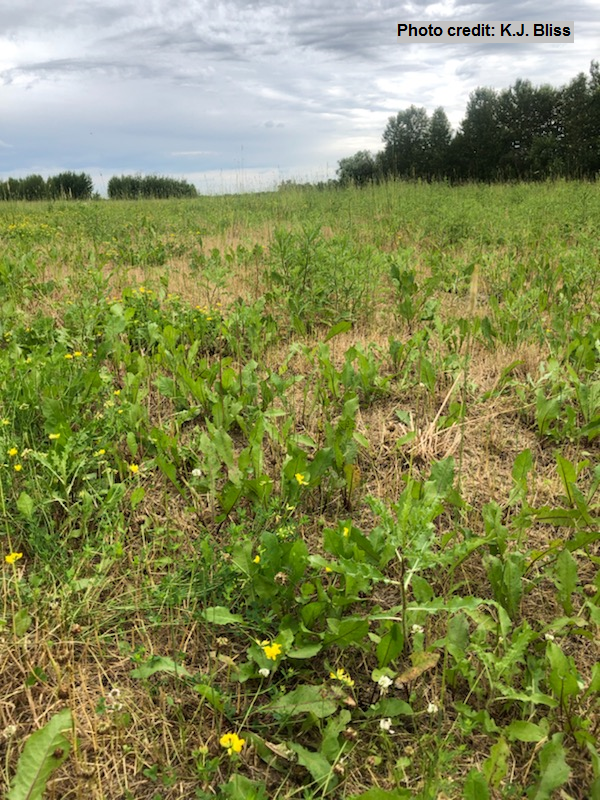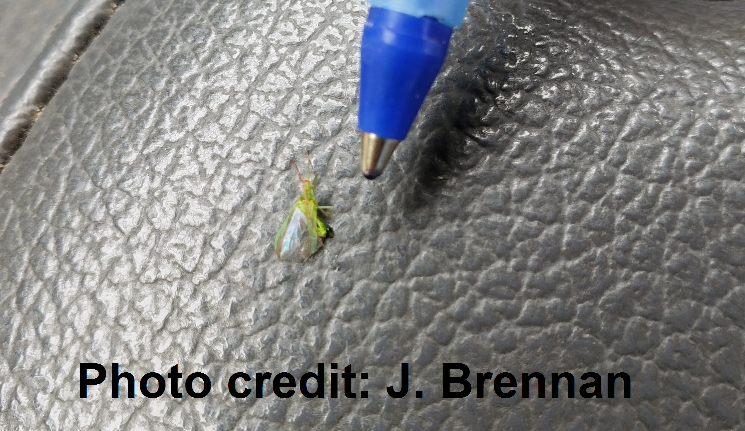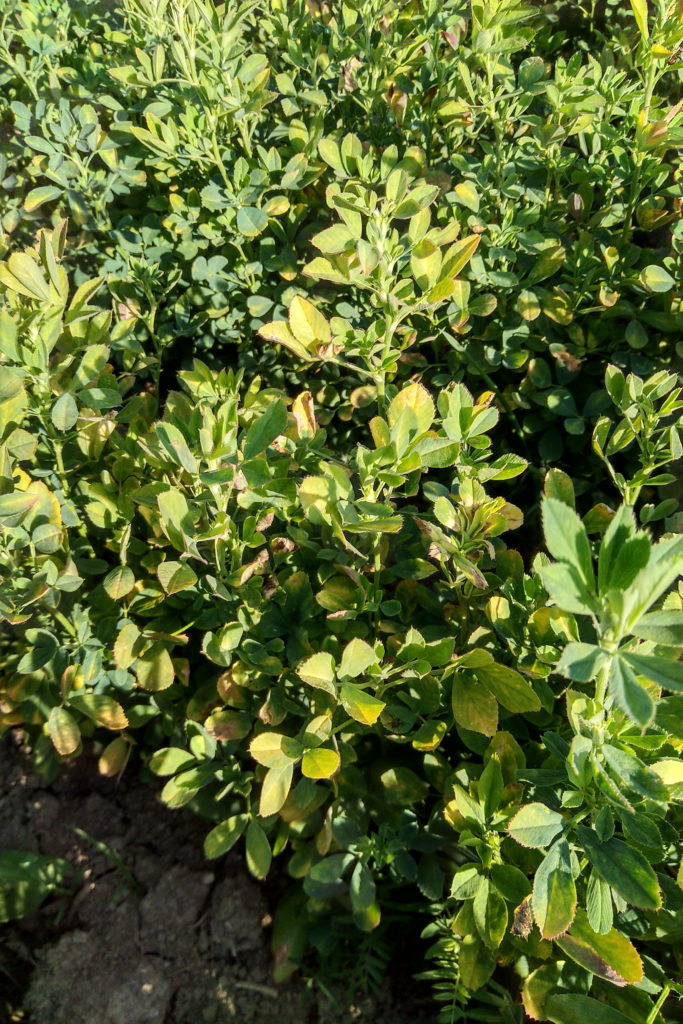
Reports are coming in about insect pressure in forage crops and pastures across the province. Central and eastern Ontario currently have high potato leafhopper pressure, while districts across northern Ontario are challenged by armyworms. The only way to know if a field has insect pressure is to scout it! More information about scouting forage crops can be found in OMAFRA Publication 811: Agronomy Guide for Field Crops. Where thresholds have been exceeded, Publication 812: Field Crop Protection Guide has information on insecticide options.
Potato Leafhoppers
Potato leafhoppers (PLH) are lime green, wedge-shaped insects that are up to 3 mm (1/8 in.) long (Figure 1). Unlike other insects, they can move sideways or backwards as fast as they can move forwards. They are easy to confuse with aphids, who are rounder (pear-shaped), often a darker green, and have legs that are visible from above. PLH overwinter in the southern United States and blow into Ontario on storm fronts, typically in late May or throughout June. PLH are spread by the wind, so large regions tend to have PLH pressure; this pest is not isolated to individual fields.

Figure 1. Potato leafhopper
PLH suck the juices out of alfalfa leaves. A compound in their saliva closes off the xylem and phloem, preventing nutrients and water from moving around the plant. This stunts the alfalfa. PLH feeding causes a characteristic yellow V shape on the tips of leaves. By the time these symptoms appear, stunting has already occurred, and the crop will not grow any more (Figure 2). “Hopperburn” is commonly confused with stress from dry weather or boron deficiency.

Figure 2. Hopperburn on alfalfa
PLH populations increase rapidly, so producers should scout their hay crops every 5-7 days until the first killing frost. To determine whether PLH pressure is high enough to justify control, sweep in a 180° arc with a 15” diameter net and count the number of PLH captured. Take 20 sweeps from five areas of the field, avoiding field edges. The number of PLH considered threshold for control varies with the height of the crop (Table 1). For PLH-resistant alfalfa varieties in a production year, the threshold is four times higher. If a net is not available, a baseball cap is roughly 1/5th the surface area. Be sure to close the cap tightly after a sweep, as PLH will jump out before they are counted.

To control PLH the alfalfa must be cut. This takes away the insects’ food source and stimulates new growth in the alfalfa. Depending how tall the crop is, producers need to decide between taking the crop as forage or leaving it cut in the field. Either way, scout the field five days after cutting to determine if the population has fallen below threshold. If the population is still above threshold, spraying is warranted to protect the new regrowth.